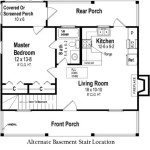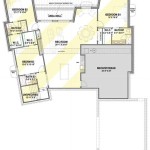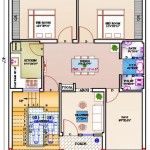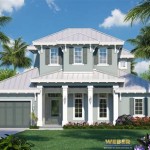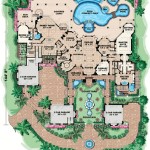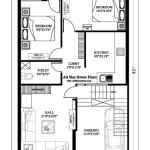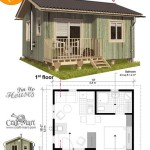Simple A-Frame Home Plans: A Comprehensive Guide
A-frame homes, characterized by their steeply angled roofline that forms the shape of the letter "A," have enjoyed enduring popularity for their unique aesthetic appeal and relatively simple construction. The straightforward design lends itself well to DIY projects and cost-effective building options. This article will explore the key considerations when exploring simple A-frame home plans, covering design elements, cost factors, and practical adaptations for modern living.
Understanding the Core Elements of Simple A-Frame Plans
The inherent simplicity of A-frame architecture stems from its core design principle: the roof acts as the primary structural component, extending all the way to the ground. This minimizes the need for traditional walls, significantly reducing material and labor costs. Most simple A-frame plans adhere to this fundamental structure, but variations exist in terms of size, layout, and the inclusion of additional features like dormers, decks, or supplemental walls.
A basic A-frame plan typically involves two large, triangular frames that form the roof and exterior walls. These frames are connected by a ridge beam at the peak and a floor platform at the base. The space within this triangular structure is then divided into usable living areas. The simplicity of this framework makes it attractive for those seeking a quick and relatively inexpensive build, particularly for vacation homes or small weekend retreats.
However, the angled walls also present design challenges. The usable floor space is reduced due to the sloping sides, which can limit furniture placement and storage options. Therefore, careful planning is essential to maximize the functionality of the interior. This often involves incorporating built-in storage solutions or opting for minimalist furniture arrangements.
Material choices for A-frame construction can vary widely, depending on budget, climate, and aesthetic preferences. Wood is a common and cost-effective option for framing and cladding, offering a natural and rustic look. Steel framing provides enhanced structural integrity and fire resistance but typically comes at a higher cost. Exterior cladding options can range from traditional wood siding and shingles to metal panels and composite materials. The choice of roofing material is also crucial, as the roof is a dominant visual element and must withstand the elements effectively.
Key Considerations for Choosing and Adapting A-Frame Plans
Selecting the right A-frame plan involves careful consideration of several factors, including site conditions, intended use, and budget constraints. The size and layout of the plan should align with the desired functionality and the number of occupants. It is crucial to assess the site's topography and soil conditions to ensure that the foundation is adequately supported. Steep slopes may require more extensive foundation work, while unstable soil may necessitate soil stabilization measures.
The intended use of the A-frame home will significantly influence the design choices. A vacation home may prioritize open living spaces and large windows to maximize views, while a year-round residence may require more enclosed spaces and enhanced insulation for energy efficiency. It is also important to consider accessibility requirements, particularly for individuals with mobility limitations.
Budget constraints play a significant role in plan selection and material choices. Opting for a smaller plan with basic finishes can significantly reduce construction costs. Utilizing locally sourced materials can also help minimize expenses. DIY construction can further lower costs; however, it requires sufficient skills and experience. Thoroughly researching material prices and obtaining multiple contractor quotes is essential for accurate budgeting.
Adapting existing A-frame plans to suit individual needs is a common practice. This may involve modifying the layout to create additional bedrooms or bathrooms, adding dormers to increase headroom, or incorporating a deck or porch for outdoor living space. Structural modifications should be carefully assessed by a qualified engineer or architect to ensure the structural integrity of the building. Alterations to the roofline, in particular, can significantly impact the stability of the A-frame structure.
Energy efficiency is a crucial consideration for modern A-frame homes. Proper insulation is essential to minimize heat loss in cold climates and heat gain in warm climates. High-performance windows and doors can further reduce energy consumption. Incorporating passive solar design principles, such as orienting the A-frame to maximize solar gain in winter and minimize solar gain in summer, can also significantly improve energy efficiency. Renewable energy systems, such as solar panels or wind turbines, can further reduce reliance on conventional energy sources.
Cost Factors and Practical Considerations for A-Frame Construction
The cost of building an A-frame home can vary significantly depending on several factors, including the size of the plan, the materials used, the location of the site, and the level of DIY involvement. Smaller, simpler plans with basic finishes typically cost less than larger, more complex plans with high-end materials.
Material costs constitute a significant portion of the overall construction budget. Lumber prices can fluctuate significantly, so it is important to research current market prices and obtain quotes from multiple suppliers. The choice of roofing material can also significantly impact costs, with metal roofing generally being more expensive than asphalt shingles. Interior finishes, such as flooring, cabinetry, and appliances, can also vary widely in price.
Labor costs are another significant factor. Hiring a general contractor to oversee the entire project can add to the overall cost but can also provide valuable expertise and project management skills. DIY construction can save on labor costs, but it requires sufficient skills and experience. Subcontracting specific tasks, such as plumbing and electrical work, may be necessary depending on local regulations and personal expertise.
Site preparation costs can also add to the overall budget. Clearing the site, leveling the ground, and installing utilities can be expensive, particularly on challenging sites. Foundation work can also be a significant cost, especially if the site requires extensive excavation or retaining walls. Obtaining necessary permits and approvals can also incur costs.
Practical considerations for A-frame construction include accessibility, ventilation, and maintenance. Ensuring that the A-frame is accessible for individuals with mobility limitations may require ramps or elevators, which can add to the cost. Proper ventilation is essential to prevent moisture buildup and mold growth. Regular maintenance, such as cleaning gutters and inspecting the roof, is necessary to ensure the longevity of the A-frame structure. The steep roof pitch can make maintenance challenging, requiring specialized equipment or professional services.
Moreover, insurance costs for A-frame homes can be higher than for traditionally built homes due to their unique design and potential vulnerability to wind and snow loads. Researching insurance options and obtaining quotes from multiple providers is crucial.
In conclusion, simple A-frame home plans offer an attractive and potentially cost-effective building option. However, careful planning, thoughtful design, and meticulous attention to detail are essential to ensure a successful and sustainable build. By considering the key factors outlined in this article, individuals can make informed decisions and create an A-frame home that meets their needs and exceeds their expectations.

Amazing A Frame House Plans Houseplans Blog Com

How To Build An A Frame House Plans Cabin

A Frame House Plans Everything You Need To Know Field Mag

Pin On Tiny Cabins

24 X A Frame Cabin Plan Project Small House

24 36 A Frame Cabin Shed Plans Blueprints For Designing Big Floor House

A Frame House Plans Everything You Need To Know Field Mag

14 X14 Tiny A Frame Cabin Plans By Lamar Alexander House

A Frame House Plans Everything You Need To Know Field Mag

Tiny House Plans A Frame Vacation Cabin Gardenfork Eclectic Diy


